To port or not to port? As with selecting any pistol, there are drawbacks and benefits. For those who are recoil sensitive and like to plink on the range — Smith & Wesson has got something for you. With the release of the M&P 2.0, there is also some other relatively new expansions from the M&P line. This week I got my hands on two very impressive pieces from the Performance Center, the 9L and 40 ported. If you have never shot a ported pistol, I highly recommend it. The two test models I received from Smith and Wesson were the M&P 9L and M&P 40.
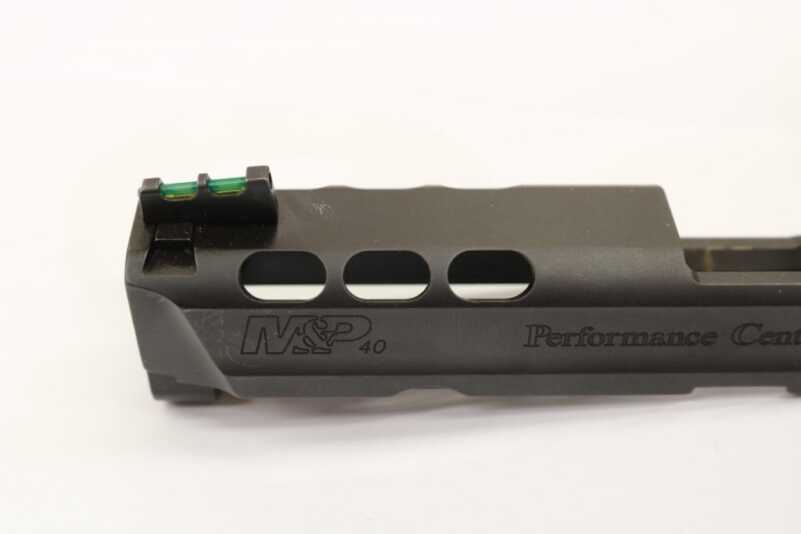
The S&W M&P 40 is chambered in .40 S&W and comes with a ported slide/barrel to help mitigate recoil. It allows for faster target acquisition and helps with recoil management of larger calibers.
The Innovation of Porting
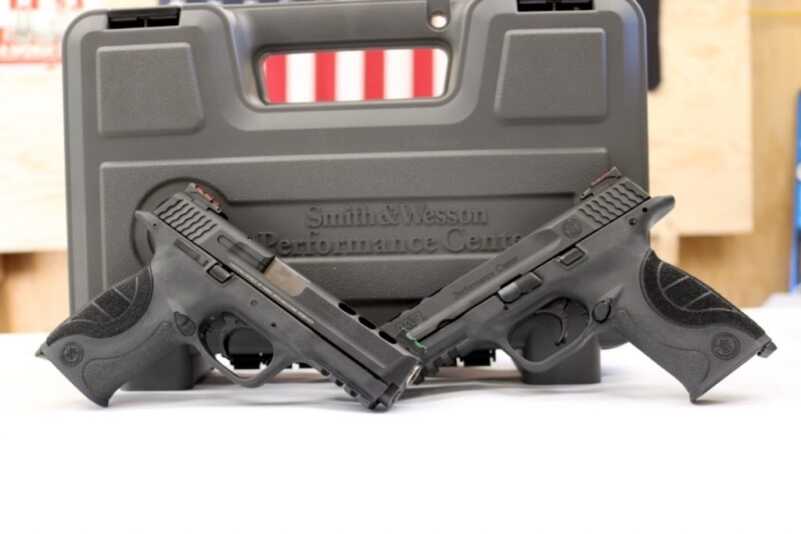
The author tested both the S&W M&P 9L chambered in 9mm and the S&W M&P 40. Both pistols functioned flawlessly.
What is porting exactly? In our case, it cuts through the barrel and slide, about ¾ of an inch before the end of the barrel. These cuts are at approximately at the 11- and 1 o’clock position. What this does is start the release of the gasses behind the bullet before the bullet is even out of the barrel, pushing the gun down a millisecond before recoil is felt. This helps reduce muzzle flip drastically and keeps the pistol on target while the slide cycles. That is my pseudo science explanation. What does that actually mean?
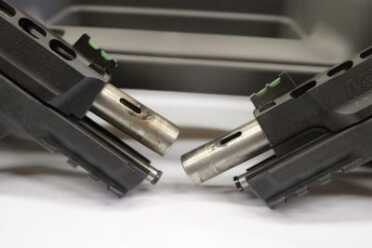
Undoubtedly there are many suggestions for selecting a pistol. People should consider that many competitions do not allow ported pistols and hot gases escaping from the barrel make it less than ideal as a CCW option.
It means that the pistol is much easier to control, and normal people can shoot larger calibers well. It is hard to describe how much easier porting makes a pistol to handle. In my view, it makes 9mm feel like a .22 LR, and it makes .40 S&W feel like 9mm. You can run a full power 9mm gun so fast it is boring to shoot multi shot drills. This offers a huge advantage for new shooters and anyone who is recoil sensitive. The most key to learning to shoot fast is understanding and mastering recoil management.
Hold the Recoil
With recoil management, there is some technique, but some of it also relies on hand strength. Picking up a ported pistol is the equivalent of doubling your hand strength, instantly. For a defensive pistol shooter, this means more rounds on target faster. And for teaching new shooters, most of the scary recoil is gone, but you are still training with a centerfire pistol. There are a lot of advantages to using a ported pistol, and very few drawbacks. Consider this as a bit of food for thought. Almost every competitive shooting sport specifically bans ports on pistols except in special classes of firearm. To take a page from Jeff Cooper, “Maybe the first thing one should demand of his sidearm is that it be unfair.
Article Continued Below
M&P 9L
SPECS
- Cartridge: 9mm
- Barrel: 5 in.
- OA Length: 8.5 in.
- Weight: 28.3 oz.
- Trigger: 5 lbs., 1 oz. (tested)
- Frame: Polymer
- Grips: Polymer
- Sights: Hi-Viz fiber optic
- Finish: Black/Armornite
- Capacity: 17+1 rds.
- MSRP: $700
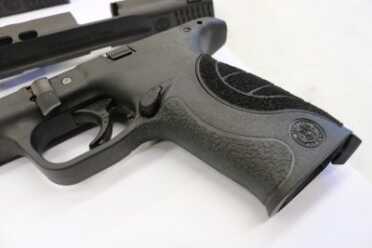
The modularity of S&W M&P’s line makes it great for customization. Users can swap out the backstops to fit their hand shape.
The M&P 9L is the long slide version of the M&P that is chambered in 9mm. It features a 5-inch barrel and is most often used for competitive shooting. The longer barrel also affords a longer sight radius, which makes accuracy easier to achieve. Because this is a performance center gun, the sights are HI VIZ brand fiber optics. The front is fixed with a green insert, and the rear is adjustable for elevation with orange inserts. This combination is lighting fast to acquire, and a fantastic choice for the rigors of competition. The green front fiber optic is large and therefore glows extremely bright. It is kind of hard for your eye to miss, which is a great quality in a front sight. I ended up covering the rear fiber optics with a marker, it was so bright in daylight. The slide on this model has lightening cuts behind the ports, reducing the mass of the slide. The barrel is also stainless steel polished to a high shine, unlike the black of normal M&Ps. It comes with the normal three backstrap inserts of the M&P line, making it user adjustable. The trigger is light and crisp, which we have seen ever since the advent of the M&P PRO line of pistols. The trigger broke at 5 pounds, 1 ounce in my test pistol.
The barrel is also stainless steel polished to a high shine, unlike the black of normal M&Ps. It comes with the normal three backstrap inserts of the M&P line, making it user adjustable. The trigger is light and crisp, which we have seen ever since the advent of the M&P PRO line of pistols. The trigger broke at 5 pounds, 1 ounce in my test pistol.
M&P 40
SPECS
- Cartridge: .40 S&W
- Barrel: 4.25 in.
- OA Length: 7.5 in.
- Weight: 27.6 oz.
- Trigger: 5 lbs., 5 oz.
- Frame: Polymer
- Grips: Polymer
- Sights: Hi-Viz fiber optic
- Finish: Black/Armornite
- Capacity: 15+1 rds.
- MSRP: $700
The M&P 40 featured a 4.25 inch barrel, and was otherwise identical. It has the same sights, same lightening cuts behind the ports, and the trigger broke at 5 pounds, 5 ounces.
Performance
This is an excellent choice of handgun if you want something fun to shoot. The only downside for me is the fact that most competitions ban them. That is a pretty cheap fix though, just by dropping in a non-ported barrel. For a purely tactical gun, these are damn hard to beat. I was able to put lead on target so fast with these pistols that it was a little scary. Between us, compensators or ports have been growing in popularity for some military applications that require a pistol, and I can see why. It feels like your front sight doesn’t move with these guns, especially in 9mm. And it makes bigger calibers much more manageable. I don’t care what the FBI tests say, I believe in calibers that start with a “4” for defense. Although 9mm might expand, .40 certainly doesn’t get smaller. If you have never fired a ported pistol, it is an experience for certain. Either of these is an excellent choice.
Drawbacks of Porting
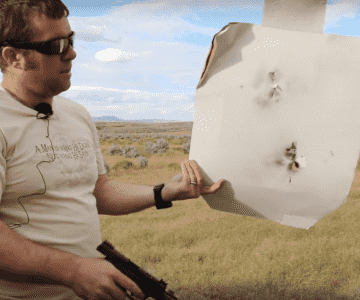
The author demonstrates the effects of hot gases on cardboard as a demonstration of what could happen to a shooter’s skin in a close-quarter combat situation.
So what are the drawbacks? For starters, ported pistols are louder. Now you have hot gasses pushing up in front of your face, instead of out the barrel and down range. You do not want to cook one of these off in a car, trust me. Years ago I had a team show up for vehicle training with ported guns, they did not have a good time with shooting through windshields and the like. If you are in the middle of a carjacking you are going to do it anyway, but it’s not going to be fun. Something to consider if you think about this as a CCW gun.
Also, if you are using a ported gun in low light conditions, the muzzle flash is now going to be directly in front of your eyes, and between them and the front sight. This is not a big deal if you are using a flashlight, but for pure night shooting, it is going to blind you more than a regular barrel. Some of this can be mitigated with a high-quality low flash powder, but something you need to check before you pick this as your carry piece.
Lastly — also applies directly to being in a gunfight, or training for a gunfight. Part of learning the American Martial Art of pistoleering is training for contact range shooting. This means training to use your pistol when you are already hands on with a bad guy. Or he is hands on with you, shooters choice. At these kinds of ranges, you are very likely to burn yourself with your ports. Ports also have a bad habit of occasionally throwing a piece of the copper jacket up instead of out, and if your forearm is over the top of that, it is going to hurt. Neither of these things is likely to kill you, but it isn’t going to feel good.
Are those the most likely of scenarios? Probably not. But they are things to think about before you decide to port your carry pistol or select a pistol that is ported for CCW.
For more information about Smith & Wesson pistols, click here.
For more information about Hi-Viz sights, click here.
To purchase a S&W M&P 9L on GunsAmerica, click here.
To purchase a S&W M&P 40 on GunsAmerica, click here.

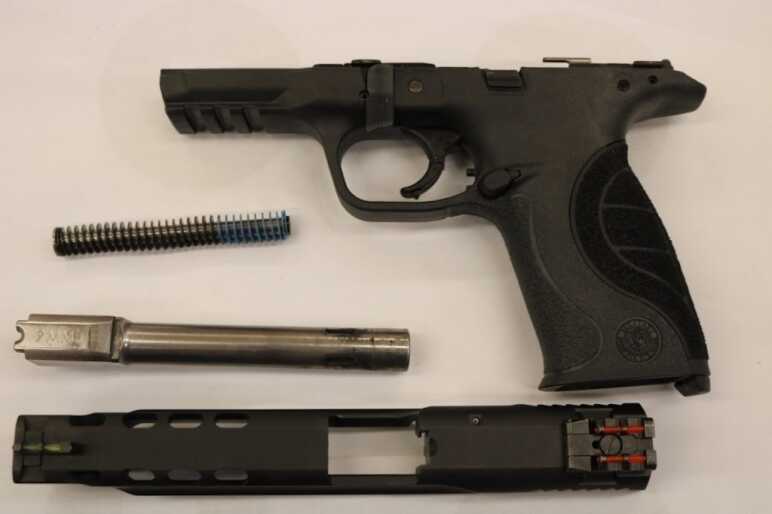
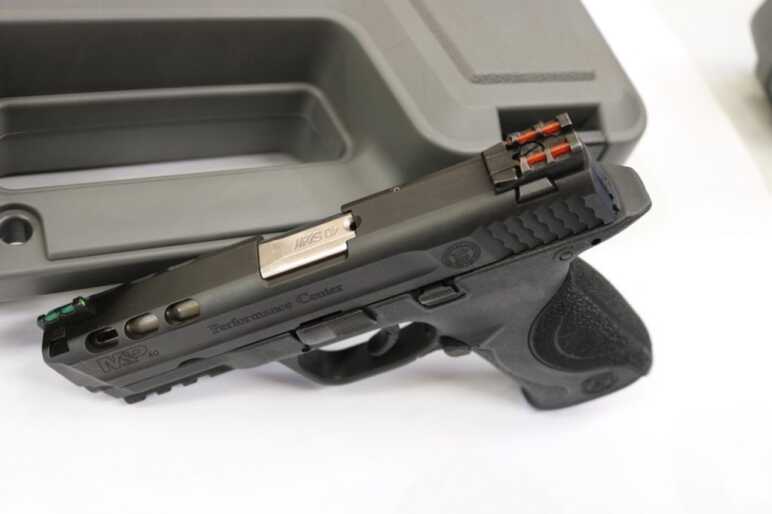
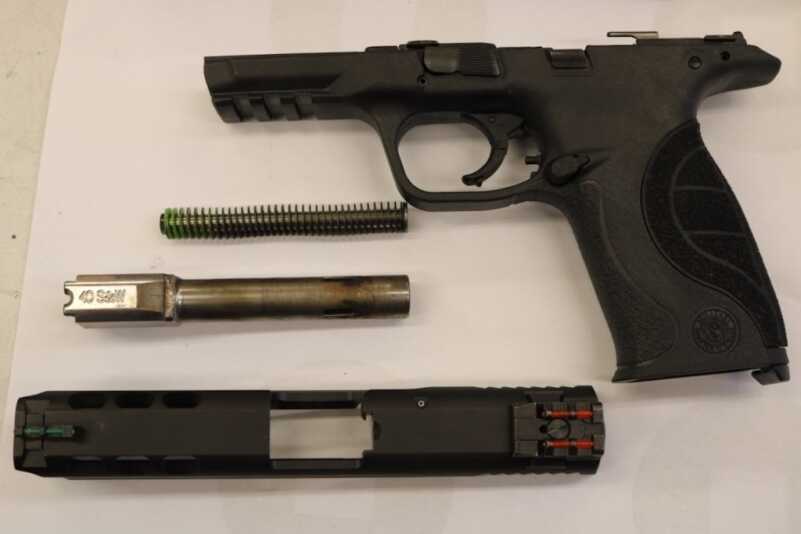
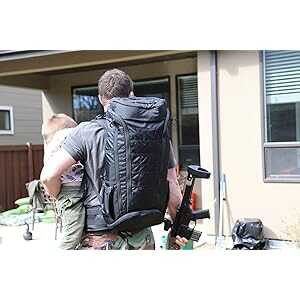
I found this article to be very informative and helpful 👍
I’m astonished by the amount of people that are ok with losing their sense of hearing in a self defense situation. It might not be permanent, but it will last the duration of the situation. Yes, everything is loud, but you will guaranteed be unable to hear anything at all for a bit after shooting a short 357 or 44 that’s ported. I’d rather deal with some recoil than lose my ability to hear.
Thanks Clay! Really appreciate hearing the pros & cons
I ported my S&W 340PD…full boat 357 out of an 11 oz gun just plain sucked so I sent it to Magna-Port and then added a Delta Ergo grip. I wouldn’t call it pleasant now, but there is a big improvement. Great pocket or back up gun. I’ve tried it in low light and the flash didn’t bother me.
Great to hear from someone who HAS ACTUALLY shot a ported gun in low light.
Thanks
It all depends on the individual situation. Inside a car or at low light aimed shooting it will put you in a disadvantage after your first shot
Daytime till late dusk and in an open area it won’t matter so much. If you are able to pick your time and place “which you can’t” it’s better to use your skills and practice instead of a tricked out gun
I would suggest folks ACTUALLY shoot a ported pistol in low light and”retention” before repeating internet myrhs.
I’ve put thousands of rounds through a M&P40 PC Ported (with a Trijicon RM07) and can say from ACTUAL experience, “You are NOT correct in your comments about low light and ” retention” shooting”.
I agree with you 100%
I have a revolver that’s ported and I love it. Even though I know I lost some energy but coming out of a 44mag there’s enough to get it done.
Fire it in the dark, and your first shot better count. If you think muzzle rise is bad, wait until you can’t see your target for a measurable time. I would never carry a ported handgun.
No true!!
Another internet myth propagated by folks who have never shot a ported pistol in the dark.
Check out Jerry Micukek’s video n this before repeating the old myth.
There are more cons than pros when it comes to ported barrels on handguns. It’s a cool idea, but the drawbacks in many defensive situations say to leave it alone and let the hot gasses do their work on a target for CQB if it comes to that. Even if you miss close in, the ejecta of gases and unburnt powder in the face of a combatant could make a difference. Instead with porting, you run the risk of you being the recipient and I wouldn’t want to place myself in that situation. Just my 2 cents.
Have you ever shot a ported pistol in “retention”?
Obviously not.
I shoot a Glock 17C and carry it on duty. Have done for the last 7 years. Shooting from retention requires me to twist my wrist slightly to direct the ports away from my face. Seeing how I have to shoot from retention every time I qualify, day or night, I think I am experienced enough to say when you forget to twist the ports away from your face, it SUCKS. I have suffered some minor cuts and a couple minor burns when I forget but I like the damn gun enough not to change. Night shoots aren’t an issue for me; see two big jets of flame making a ‘V’ but you can easily shoot through the issue. Lots of people here running their suck have obviously never fired a ported weapon before or they wouldn’t say such crap.
I also run an IPSC open gun in .38 Super Comp so true compensated guns aren’t new to me either.
Clay,
Good review! One more point on porting… a decrease in energy (muzzle velocity). Port a short barrel defensive pistol and you may be surprised by the lack of slug energy at 5/7 yards.
You beat me to it! I would like to see him chromo some of the shots to see how much decline in MV we see from the ports
Still, regardless of that energy drop, you’d have a dead perp on the ground in front of you.